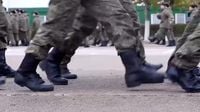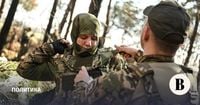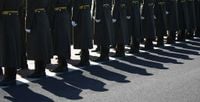President Vladimir Putin has officially approved significant changes to the rules governing military uniforms for Russia's security forces, marking a notable update to regulations that have been in place since 2010. This decree, published on the official legal information portal, introduces new elements of design and insignia across various categories of military personnel, including officers, warrant officers, and cadets.
The new regulations come at a time when the Russian military and its special services are undergoing various reforms. The updated rules not only modernize the appearance of military uniforms but also provide specific guidelines for different branches, including the Armed Forces, the Federal Security Service (FSB), the Federal Protective Service (FSO), the Foreign Intelligence Service (SVR), and the National Guard (Rosgvardia).
Among the most notable changes is the introduction of cornflower-colored edging on the shoulder boards and caps of FSO employees. This addition aims to enhance the distinction and identity of personnel within this critical security organization. Furthermore, the regulations provide updated insignia for senior officers, particularly those in high command positions within the FSB and the Main Directorate of Special Programs, which reports directly to the President.
In terms of uniform design, the decree specifies new tailoring elements and chevrons that will be introduced for officers and cadets. For instance, the new rules outline how shoulder boards should be worn based on the department and type of service, ensuring that all members of the military adhere to a consistent and recognizable standard.
The updates also extend to field uniforms, which have been revamped to include new summer and winter sets tailored specifically for FSB employees and intelligence units. These new uniforms feature camouflage jackets, insulated headgear, protective underwear, specialized socks, and shoes that are designed to meet various climatic conditions. Such enhancements are crucial for personnel who operate in diverse environments, from urban settings to remote and challenging terrains.
Additionally, the decree clarifies the rules regarding the uniforms worn by female military personnel. This includes those serving in naval units and educational institutions associated with the FSB. The naval uniforms for officers and FSB employees on ships have been updated, reflecting a commitment to inclusivity and modernization within the ranks.
In conjunction with these updates, the new decree also repeals outdated regulations that were in effect from 2014 to 2020, signaling a shift towards more contemporary standards in military attire. The changes are set to take effect immediately upon publication, with implementation funded through the current budgets of the respective agencies.
It’s worth noting that these changes follow a broader trend within the Russian military and security apparatus, which has seen various reforms aimed at enhancing operational effectiveness and modernizing the image of the armed forces. The introduction of new uniforms is not just about aesthetics; it reflects an ongoing effort to boost morale and foster a sense of unity among personnel.
In November 2024, similar updates were made within the Rosgvardia, where elements of uniforms for female employees were revised. According to government decrees, these women will now wear hats instead of the traditional pilot caps that were previously part of their uniform, further emphasizing the ongoing evolution of military attire.
As these new regulations roll out, they underscore a significant moment in the history of Russia's military uniform policy. The changes are designed not only to improve the functionality and comfort of uniforms but also to reinforce the pride and professionalism of those who serve in the nation's armed forces and security services.
Overall, the updates to military uniforms reflect a comprehensive approach to modernizing Russia's military image and operational effectiveness. As the country navigates complex geopolitical landscapes, such reforms may play a crucial role in shaping the identity and readiness of its military personnel.









